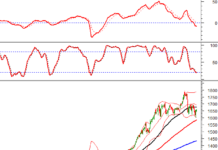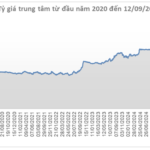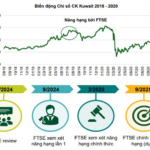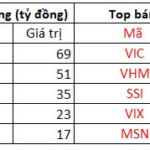
The headquarters of the Bank of England in London. Photo: AFP/TTXVN
After much anticipation, on the evening of September 17th (Vietnam time), the U.S. Federal Reserve (FED) implemented its first interest rate cut of 2025. The FED reduced the rate by 0.25 percentage points, as widely expected, bringing the policy rate to a range of 4% – 4.25%. This move was accompanied by significant insights into the U.S. economic outlook.
Beyond the FED, numerous central banks worldwide have been adjusting their interest rate policies. While some have followed the FED’s lead, others are adopting more cautious approaches tailored to their economic conditions.
Just hours before the FED’s decision, the Bank of Canada (BOC) also cut its interest rate by 0.25 percentage points, marking its first reduction since March. The BOC is expected to make another cut in October, as economic growth slows, the labor market weakens, and inflation risks remain contained.
In contrast, the Bank of England (BOE) is anticipated to hold rates steady during its policy meeting today. With inflation at 3.8%—the highest among developed economies—investors believe the BOE is unlikely to cut rates further this year, unlike the FED.
In Asia, Indonesia’s central bank surprised markets on September 17th with its third consecutive rate cut to stimulate economic growth. The bank is considering further monetary easing. Experts predict that following the FED’s decision, other regional central banks may take similar actions soon.
Suan Teck Kin, Director of Global Markets and Economic Research at UOB Group, stated: “I believe several countries, particularly in Southeast Asia, may implement rate cuts. There is room for Malaysia, Thailand, and Indonesia. As for China, I think the People’s Bank of China could continue cutting rates for the rest of the year. The decision will depend on economic conditions. If economic data remains weak, the likelihood of cuts will increase significantly.”
Meanwhile, the Bank of Japan (BOJ) is expected to maintain its current rate at its meeting on Friday. The FED’s rate cut and recent political developments in Japan have made some BOJ officials cautious. However, Bloomberg reports that 88% of surveyed economists predict the BOJ will raise rates between now and January 2026.
VN-Index Projected to Reach 1,854 Points by Year-End, Yet Volatility Remains Inevitable
The broader domestic and global macroeconomic landscape, coupled with the impending stock market upgrade narrative, serves as a powerful catalyst fueling the market’s upward trajectory.








































![[Infographic] A Comprehensive Overview of Bank Performance in H1 2025](https://xe.today/wp-content/uploads/2025/09/info-ngan-hang-quy-2-100x70.jpg)

